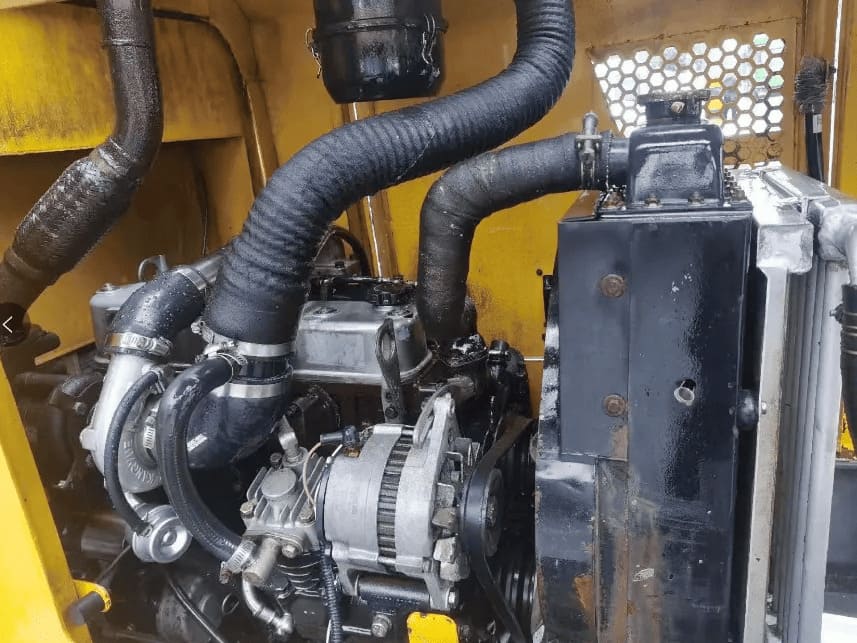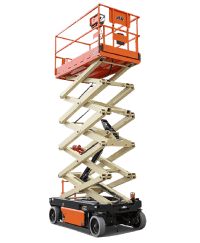Your cart is empty Continue Shopping

February 8, 2025
People can suffer from heatstroke, and Aerial lifts may also malfunction, leading to accidents. Whether for one’s own life or for the lives of others, maintenance of Aerial lifts in high-temperature weather cannot be neglected. Next, I will introduce the potential hazards of Aerial lifts in high temperatures and methods to avoid them, preventing Aerial lifts from malfunctioning due to “heatstroke.”
1. lifts Safety Hazards
1. Engine Overheating and Wear
In high-temperature environments, the engine cooling system may not effectively dissipate heat, leading to a sharp rise in coolant temperature, which can cause “boiling” phenomena. This not only reduces engine power but may also increase thermal stress on key components such as pistons and cylinder heads, accelerating wear and damage. Additionally, it may lead to oil deterioration, reduced lubrication performance, and increased friction and wear of internal engine parts.
2. Hydraulic System Instability
High temperatures can cause hydraulic oil to deteriorate, reducing its viscosity and lubrication performance, thereby affecting the stability and response speed of the hydraulic system. Moreover, seals in the hydraulic system may fail due to aging in high temperatures, leading to leaks and performance degradation.
3. Electrical System Failure
High temperatures may cause wires and cables to age and insulation layers to crack, increasing the risk of short circuits and fires. Batteries may fail due to electrolyte evaporation in high temperatures, affecting lifts starting and power supply.
4. Tire and Brake System Issues
High temperatures can increase tire pressure, raising the risk of blowouts. At the same time, tires are more prone to wear and aging in high temperatures, and the brake system may fail due to heat generated by friction, leading to increased braking distances or even failure to brake.
2. Safety Hazards for Operators
1. Heatstroke and Fatigue
Operators working for long periods in high-temperature environments are prone to increased body temperature, dehydration, fatigue, and heatstroke. High temperatures may also affect operators’ judgment and reaction speed, increasing the risk of operational errors.
2. Obstructed Vision and Operational Difficulties
High temperatures may cause the windshield to fog up or create glare, affecting the operator’s visibility.
Operators may find it difficult to concentrate due to physical discomfort in high temperatures, leading to operational errors.
3. Fire Risks
There may be flammable and explosive items inside the lifts, such as lighters and perfumes. These items can easily ignite a fire in high temperatures, posing a serious threat to the lifts and operators.
3. Preventive Measures and Response Strategies
1. Strengthen lifts Maintenance and Inspection
Regularly inspect and maintain the engine, hydraulic system, electrical system, and brake system to ensure the lifts is in good condition.
2. Replace Aging Equipment
Check and replace aging wires, cables, and seals to prevent failures caused by high temperatures.
3. Reasonably Arrange Work and Rest Times
Avoid high-intensity work during high-temperature periods, reasonably arrange work and rest times, and ensure operators have sufficient rest.
4. Prepare Sufficient Supplies
Provide enough drinking water and sun protection products to ensure the health and comfort of operators.
5. Enhance Safety Protection and Improve Work Environment
Improve the work environment and protective measures, do not bring flammable and explosive items onto Aerial lifts, install sunshades and air conditioning in the lifts to lower the internal temperature, improve operators’ comfort, and provide protective gear such as sun-protective clothing, helmets, and goggles to prevent skin damage from high temperatures.
6. Strengthen Safety Training and Emergency Drills
Provide safety training for operators on high-temperature work to enhance their safety awareness and response capabilities, and regularly organize emergency drills to ensure they can respond quickly and effectively in emergencies.
I hope the above knowledge can help you prevent crises and respond calmly, but I hope even more that you will never need this knowledge and that you will be safe every day, never encountering such accidents.




